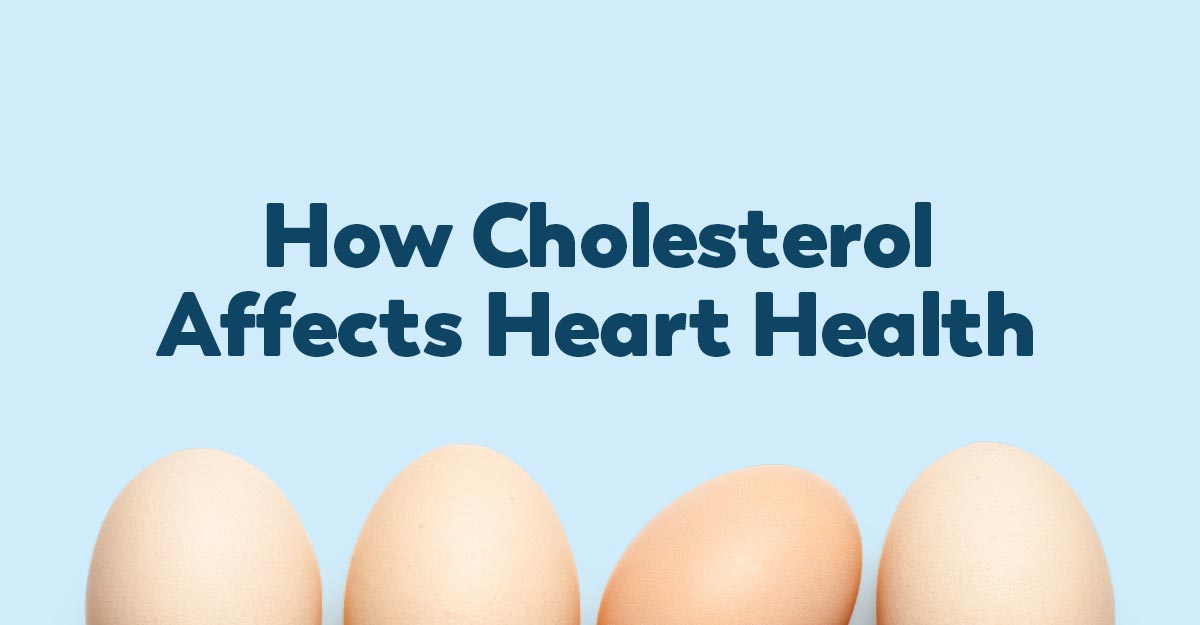
Heres how you can still get heart healthy after 40 – Here’s how you can still get heart healthy after 40. This comprehensive guide dives into actionable strategies for maintaining a healthy heart as you age. From dietary changes and exercise routines to stress management and sleep hygiene, we’ll explore practical steps you can take to improve your cardiovascular health. Learn how to make lasting lifestyle changes that promote heart wellness in your 40s and beyond.
This isn’t about radical overhauls; it’s about incorporating small, sustainable changes into your daily life. We’ll provide specific meal plans, exercise suggestions, and stress-reduction techniques, all tailored for individuals over 40. The goal is to empower you with the knowledge and tools to take control of your heart health and enjoy a vibrant, fulfilling life.
Dietary Changes for Heart Health After 40

Maintaining a healthy heart as you age is crucial. Dietary adjustments play a significant role in preventing heart-related issues after 40. This involves making mindful choices about what you eat and how much you consume. Prioritizing nutrient-rich foods and managing portion sizes are key elements of a heart-healthy diet. This guide will provide actionable steps to achieve and maintain heart health through dietary changes.Dietary changes are essential for heart health after 40 because metabolic rates often slow down, and the body’s ability to process nutrients may differ.
This necessitates a shift in dietary habits to maintain optimal cardiovascular function and reduce the risk of chronic diseases.
Healthy Substitutions for Unhealthy Foods
Adopting healthy substitutions can significantly impact your heart health. Replacing less-healthy foods with nutrient-rich alternatives can improve your overall well-being and reduce the risk of heart disease.
- Replace processed meats with lean protein sources. Processed meats are often high in sodium and saturated fat, which contribute to high blood pressure and cholesterol levels. Lean protein sources like fish, poultry (without skin), and beans provide essential nutrients without the harmful effects of processed meats. Fish, particularly fatty fish like salmon, are rich in omega-3 fatty acids, which are beneficial for heart health.
- Swap sugary drinks for water or unsweetened beverages. Sugary drinks contribute to weight gain and increase the risk of heart disease. Water or unsweetened beverages like herbal tea are healthier alternatives, keeping you hydrated without adding excess sugar or calories to your diet.
- Trade refined grains for whole grains. Refined grains lack fiber and essential nutrients, increasing the risk of heart disease. Whole grains, such as brown rice, quinoa, and whole-wheat bread, are rich in fiber, which helps regulate blood sugar levels and lower cholesterol.
- Substitute fried foods with baked or grilled options. Fried foods are high in unhealthy fats, contributing to high cholesterol and weight gain. Baking or grilling foods uses less fat and helps maintain a healthier diet.
- Replace full-fat dairy with low-fat or non-dairy alternatives. Full-fat dairy products are high in saturated fat, which can increase cholesterol levels. Low-fat or non-dairy alternatives like skim milk, Greek yogurt (low-fat), or almond milk offer similar nutrients without the saturated fat content.
Heart-Healthy Meal Plans for Individuals Over 40
These meal plans emphasize portion control and nutrient density, essential for heart health after 40. They are designed to provide adequate nutrition without excess calories or unhealthy fats.
- Mediterranean-style meal plan: This plan emphasizes fruits, vegetables, whole grains, lean proteins, and healthy fats, mimicking the traditional Mediterranean diet. Portion sizes should be controlled to manage calorie intake and promote weight management. This plan encourages consuming olive oil, nuts, and seeds as healthy sources of fat.
- DASH (Dietary Approaches to Stop Hypertension) meal plan: This plan is specifically designed to lower blood pressure, crucial for heart health. It emphasizes fruits, vegetables, low-fat dairy, and lean protein, while restricting sodium intake. Portion sizes are important to maintain weight and control calorie consumption.
- Plant-based meal plan: This plan focuses on plant-based foods, including fruits, vegetables, whole grains, legumes, and nuts. It emphasizes minimizing animal products and prioritizing plant-based proteins. Portion control is crucial to avoid excessive calorie intake.
Heart-Healthy Recipes
These recipes demonstrate how to prepare delicious and nutritious meals using heart-healthy ingredients quickly and easily.
- Baked Salmon with Roasted Asparagus and Quinoa: This recipe combines lean protein with healthy vegetables and whole grains, providing a balanced meal. Prepare the salmon and asparagus in the oven for a quick and easy preparation.
- Lentil Soup: This hearty soup is packed with protein and fiber, perfect for a satisfying and heart-healthy meal. The lentils are a great source of plant-based protein and fiber.
- Chicken Stir-fry with Brown Rice: This recipe combines lean protein with colorful vegetables and brown rice for a balanced meal. The stir-fry can be customized with a variety of vegetables to create different flavor profiles.
Sample Weekly Meal Plan
This meal plan incorporates the healthy substitutions and meal plans discussed above.(Sample weekly meal plan would go here, outlining specific meals for each day using the substitutions and meal plans.)
Nutritional Comparison Table
| Food | Calories | Fat (g) | Sodium (mg) | Cholesterol (mg) |
|---|---|---|---|---|
| Regular Hamburger (before) | 500 | 25 | 1200 | 80 |
| Lean Ground Turkey Burger (after) | 400 | 15 | 600 | 50 |
| Fried Chicken (before) | 650 | 35 | 1000 | 150 |
| Baked Chicken Breast (after) | 450 | 10 | 500 | 70 |
| White Bread (before) | 250 | 2 | 300 | 0 |
| Whole Wheat Bread (after) | 200 | 1 | 150 | 0 |
Exercise and Physical Activity
Staying active is crucial for maintaining heart health, especially as we age. Regular exercise helps strengthen the heart muscle, improves blood flow, and reduces the risk of various cardiovascular diseases. This section dives into different types of exercises suitable for individuals over 40, along with tailored workout routines for varying fitness levels. Understanding how to incorporate physical activity into daily life is also vital for long-term success.Consistent physical activity, particularly aerobic exercise, strengthens the heart, making it more efficient at pumping blood throughout the body.
Staying heart healthy after 40 is totally achievable, even if you’ve made some less-than-ideal choices in the past. One crucial thing to consider, though, is how habits like binge drinking can significantly impact your overall well-being, potentially even rewriting your DNA. Checking out heres how binge drinking can rewrite your dna will give you a better understanding of this.
So, while acknowledging past choices is important, focusing on healthy habits like a balanced diet, regular exercise, and stress management is key to maintaining a healthy heart as you age.
This enhanced efficiency lowers blood pressure and reduces the risk of heart-related issues.
Types of Exercises for Heart Health
Engaging in a variety of exercises is beneficial for overall fitness. Three types of exercises that contribute significantly to cardiovascular health are aerobic exercise, strength training, and flexibility exercises. Aerobic exercises, such as running or swimming, improve lung capacity and heart function. Strength training, involving resistance exercises, builds muscle mass and increases metabolism. Flexibility exercises, like yoga or stretching, enhance range of motion and reduce stiffness.
Workout Routines for Different Fitness Levels
Tailoring exercise routines to individual fitness levels is essential for achieving results safely and effectively. Here are three workout routines designed for varying fitness levels.
Beginner Routine (3 times per week)
This routine focuses on low-impact exercises, perfect for beginners or those returning to exercise after a break. Warm-up with 5 minutes of brisk walking or light jogging. Perform 10-12 repetitions of each exercise for 2 sets. Cool-down with 5 minutes of stretching.
- Walking Lunges (2 sets of 10-12 repetitions per leg): Step forward with one leg, bending both knees to 90 degrees. Return to starting position and repeat with the other leg.
- Chair Squats (2 sets of 10-12 repetitions): Sit in a chair with your back straight and hands on your thighs. Stand up, then return to the chair position.
- Arm Circles (2 sets of 15-20 repetitions in each direction): Raise your arms to shoulder height and make small circles forward and backward.
- Calf Raises (2 sets of 15-20 repetitions): Stand with feet shoulder-width apart and raise up onto your toes, then lower back down.
Intermediate Routine (4 times per week)
This routine incorporates more intensity and variety, suitable for individuals with a moderate fitness level. Warm-up for 10 minutes with a combination of jogging and dynamic stretching. Perform 12-15 repetitions of each exercise for 3 sets. Cool-down with 5 minutes of static stretching.
- Running (30 minutes): Gradually increase the intensity and duration of your runs over time.
- Push-ups (3 sets of as many repetitions as possible): Modify by performing incline push-ups against a wall or bench if needed.
- Plank (3 sets, hold for 30-60 seconds): Maintain a straight line from head to heels while supporting your body on your forearms and toes.
- Bicycle Crunches (3 sets of 15-20 repetitions per side): Lie on your back with knees bent and alternate bringing elbow to opposite knee.
Advanced Routine (5 times per week)
This routine is designed for individuals with a high fitness level and experience in exercising. Warm-up for 15 minutes with high-intensity interval training (HIIT). Perform 15-20 repetitions of each exercise for 3-4 sets. Cool-down with 5 minutes of static stretching.
- HIIT Cardio (20-30 minutes): Alternate between high-intensity bursts of activity and short recovery periods.
- Burpees (3 sets of as many repetitions as possible): A full-body exercise combining a squat, jump, and push-up.
- Mountain Climbers (3 sets of 30-60 seconds): A dynamic exercise engaging multiple muscle groups.
- Jump Squats (3 sets of 10-12 repetitions): A high-impact exercise requiring good lower body strength.
Consistency in Exercise Routines
Regularity is key to maintaining heart health. Consistent exercise routines help the body adapt and improve cardiovascular function over time. Aim for at least 150 minutes of moderate-intensity or 75 minutes of vigorous-intensity aerobic activity per week, along with strength training twice a week.
Incorporating Physical Activity into Daily Life
Integrating physical activity into daily routines can make a significant difference. Taking the stairs instead of the elevator, parking farther away from your destination, or walking during your lunch break are simple ways to increase activity levels. Finding activities you enjoy, such as dancing, hiking, or playing sports, makes exercise more sustainable.
| Exercise | Heart Rate | Blood Pressure | Stress Reduction |
|---|---|---|---|
| Walking | Moderate | Lowered | Significant |
| Running | High | Lowered | Moderate to High |
| Strength Training | Moderate to High (depending on intensity) | Lowered | Moderate |
Stress Management Techniques

Stress is an unavoidable part of life, but its impact on our well-being, particularly heart health, shouldn’t be underestimated. Chronic stress can lead to elevated blood pressure, increased heart rate, and a higher risk of heart disease. Understanding and effectively managing stress is crucial for maintaining a healthy heart after 40. This section explores various techniques to help you navigate stressful situations and cultivate a more balanced lifestyle.Stress reduction techniques can significantly improve heart health by lowering blood pressure and heart rate.
Mindfulness, relaxation exercises, and stress-reducing lifestyle changes help mitigate the harmful effects of stress on the cardiovascular system. Regular practice of these techniques can contribute to a healthier heart.
Stress-Reduction Techniques
Different stress-reduction techniques can address various aspects of stress response. Each approach offers a unique path toward stress management and improved heart health.
- Mindfulness Meditation: This practice involves focusing on the present moment without judgment. By paying attention to your thoughts, feelings, and bodily sensations, you can develop a greater awareness of your stress response. This awareness helps you detach from negative thoughts and emotions, thereby reducing their impact on your heart rate and blood pressure. Mindfulness meditation cultivates emotional regulation, which is vital for managing stress and promoting heart health.
- Progressive Muscle Relaxation: This technique involves systematically tensing and relaxing different muscle groups in the body. As you tense and release tension, you become more aware of physical sensations and learn to distinguish between tension and relaxation. This process helps reduce physical and mental tension, leading to a calmer state and a lower heart rate.
- Deep Breathing Exercises: Consciously controlling your breathing can have a profound impact on stress levels. Deep, slow, and controlled breathing activates the parasympathetic nervous system, which counteracts the stress response. This technique can quickly calm your body and mind, reducing heart rate and blood pressure.
Relaxation Exercises
Relaxation exercises are powerful tools for managing stress and promoting overall well-being. Consistent practice can improve your ability to cope with stressful situations and contribute to a healthier heart.
- Diaphragmatic Breathing:
- Find a comfortable seated or lying position.
- Place one hand on your chest and the other on your abdomen.
- Inhale slowly and deeply through your nose, allowing your abdomen to rise while your chest remains relatively still.
- Exhale slowly and completely through your mouth, feeling your abdomen fall.
- Repeat this process for 5-10 minutes, focusing on the rhythm of your breath.
- Guided Imagery:
- Find a quiet space and settle into a comfortable position.
- Close your eyes and focus on a calming image or scene, such as a peaceful beach or a serene forest.
- Visualize the details of the scene, including colors, sounds, and sensations.
- Allow yourself to fully immerse in the image, letting go of any stressful thoughts.
- Stay in this relaxed state for 10-15 minutes.
- Yoga:
- Find a comfortable position on the floor or a mat.
- Focus on controlled movements and deep breathing.
- Practice a sequence of poses that stretch and strengthen your muscles.
- Hold each pose for a few seconds, allowing your body to relax.
- Finish with a period of deep relaxation.
Incorporating Mindfulness
Mindfulness practices can be integrated into daily routines in numerous ways. Bringing mindfulness into daily activities can help manage stress.
Staying heart-healthy after 40 is totally achievable! One often-overlooked aspect of overall well-being is hydration, and drinking plenty of water can significantly impact your health in surprising ways, such as reducing your risk of UTIs. Check out this helpful article on water can reduce uti risk for more insights. Making healthy choices like staying hydrated, along with a balanced diet and regular exercise, will help keep your heart in tip-top shape as you age.
- Mindful Eating: Pay attention to the taste, texture, and aroma of your food. Savor each bite and eat slowly, without distractions.
- Mindful Walking: Notice the sensation of your feet on the ground, the movement of your body, and the sights and sounds around you. Focus on the present moment.
- Mindful Showering: Focus on the sensation of the water on your skin, the temperature, and the rhythm of your breathing.
Identifying and Managing Stress Triggers
Identifying and managing stress triggers is a crucial step in stress management. Identifying these triggers is a key step to reducing their impact.
Staying heart-healthy after 40 is totally doable! Focus on a balanced diet and regular exercise, like brisk walks or swimming. While the FDA is reportedly on the verge of banning codeine in cough syrup for children here’s the news , it’s a good reminder to prioritize overall well-being. Small, consistent changes can make a big difference in your heart health journey.
- Journaling: Write down your thoughts and feelings about stressful situations.
- Stress Inventories: Use standardized questionnaires to assess your stress levels and identify potential triggers.
- Time Management Techniques: Prioritize tasks, set realistic deadlines, and break down large projects into smaller, manageable steps.
Stress, Heart Health, and Relaxation
| Stress Level | Heart Rate | Relaxation Technique |
|---|---|---|
| Low | 60-80 bpm | Mindful walking |
| Moderate | 80-100 bpm | Progressive muscle relaxation |
| High | Over 100 bpm | Deep breathing exercises |
Sleep and Rest
Getting enough quality sleep is crucial for maintaining overall health, and heart health in particular, especially as we age. A well-rested body is better equipped to manage stress, regulate hormones, and repair tissues, all of which contribute to a healthier cardiovascular system. Sleep deprivation can have a detrimental impact on blood pressure, cholesterol levels, and inflammation, ultimately increasing the risk of heart disease.Adequate sleep plays a vital role in numerous physiological processes that directly impact heart health.
During sleep, the body repairs and restores itself, including the cardiovascular system. Hormones like cortisol and insulin are regulated during sleep, and this regulation is critical in maintaining healthy blood pressure and blood sugar levels. Furthermore, sleep deprivation can impair the body’s ability to clear out toxins, which can lead to inflammation and contribute to the development of heart disease.
The impact of sleep on the cardiovascular system is undeniable, and prioritizing sufficient rest is a significant step towards heart health.
Importance of Adequate Sleep for Heart Health
Sleep deprivation can negatively affect various physiological processes that contribute to heart health. For instance, it disrupts the body’s natural hormonal balance, impacting cortisol and insulin levels, which can lead to elevated blood pressure and increased risk of heart disease. Moreover, insufficient sleep can lead to elevated levels of inflammatory markers, further increasing the risk of cardiovascular problems.
Studies have shown a strong correlation between chronic sleep deprivation and an increased risk of developing hypertension, coronary artery disease, and stroke. These are all significant contributors to cardiovascular issues.
Sleep Hygiene Practices
Consistent sleep hygiene practices are essential for improving sleep quality. Adopting these practices can help establish a regular sleep-wake cycle and improve the overall quality of sleep.
- Establishing a Regular Sleep Schedule: Maintaining a consistent sleep schedule, even on weekends, helps regulate the body’s natural sleep-wake cycle. This consistency allows the body to anticipate sleep and wake times, improving sleep quality and duration. Aim for 7-9 hours of sleep per night for optimal heart health.
- Creating a Relaxing Bedtime Routine: Developing a relaxing bedtime routine signals to the body that it’s time to wind down. This could include taking a warm bath, reading a book, listening to calming music, or practicing gentle stretches. Avoid stimulating activities before bed, such as using electronic devices or engaging in intense discussions.
- Optimizing Your Sleep Environment: Creating a conducive sleep environment is crucial for quality sleep. Ensure your bedroom is dark, quiet, and cool. Use blackout curtains, earplugs, or a white noise machine to block out distractions. A comfortable mattress and pillows also contribute to a better sleep experience.
Connection Between Sleep and Stress Management
Sleep and stress management are intrinsically linked. Adequate sleep is essential for managing stress effectively. When we’re well-rested, we’re better equipped to cope with daily stressors and maintain emotional equilibrium. Conversely, chronic stress can disrupt sleep patterns, leading to a vicious cycle of poor sleep and increased stress. Stress hormones, like cortisol, can interfere with sleep quality and quantity.
Tips for Establishing a Consistent Sleep Schedule and Routine
Establishing a consistent sleep schedule and routine is key to improving sleep quality. This involves creating a regular sleep-wake cycle, even on weekends, to regulate the body’s natural sleep-wake rhythm. Consistency is key. A structured bedtime routine can signal to the body that it’s time to wind down, promoting relaxation and sleep. Avoid large meals, caffeine, and alcohol close to bedtime.
| Sleep Duration | Blood Pressure | Resting Heart Rate |
|---|---|---|
| 7-9 hours | Within healthy range | 60-80 bpm |
| Less than 6 hours | Potentially elevated | Potentially elevated |
| More than 9 hours | Potentially elevated (in some cases) | Potentially slightly elevated |
Lifestyle Choices for Heart Health After 40
Maintaining a healthy heart after 40 is crucial for overall well-being. Beyond diet and exercise, several lifestyle choices significantly impact cardiovascular health. Understanding these choices, both positive and negative, empowers individuals to make informed decisions for a healthier future.
Negative Lifestyle Choices Affecting Heart Health, Heres how you can still get heart healthy after 40
These detrimental lifestyle choices can increase the risk of heart disease and related conditions. Addressing these factors is a vital step in proactively protecting cardiovascular health.
- Smoking: Smoking damages blood vessels, reducing blood flow and increasing the risk of blood clots. Nicotine raises blood pressure and heart rate, putting a strain on the cardiovascular system. Long-term smoking significantly increases the risk of heart attacks and strokes.
- Excessive Alcohol Consumption: Heavy alcohol use can lead to high blood pressure, elevated triglycerides, and irregular heartbeats. Chronic alcohol abuse can damage the heart muscle itself, potentially leading to alcoholic cardiomyopathy.
- Lack of Sleep: Insufficient sleep disrupts the body’s natural hormone balance, potentially leading to increased blood pressure and inflammation. Chronic sleep deprivation is linked to an elevated risk of heart disease.
- Sedentary Lifestyle: A lack of physical activity weakens the heart muscle, leading to reduced cardiovascular fitness. This contributes to weight gain, which further increases the strain on the heart.
- Poor Stress Management: Chronic stress can lead to elevated blood pressure, increased heart rate, and elevated cortisol levels. These factors can contribute to a higher risk of heart disease over time.
Positive Lifestyle Changes for Improved Heart Health
Adopting positive lifestyle changes can significantly improve cardiovascular health. These choices promote a healthier heart and overall well-being.
- Quitting Smoking: Stopping smoking dramatically reduces the risk of heart disease. The body begins to repair the damage caused by smoking, improving blood flow and reducing the risk of clots.
- Moderation in Alcohol Consumption: Limiting alcohol intake to recommended levels can significantly improve heart health markers. This can help manage blood pressure and triglyceride levels.
- Prioritizing Sleep: Adequate sleep allows the body to repair and rejuvenate, improving cardiovascular function. A consistent sleep schedule and a relaxing bedtime routine can promote better sleep quality.
- Regular Physical Activity: Engaging in regular exercise strengthens the heart muscle, improves blood circulation, and helps maintain a healthy weight. Aim for at least 150 minutes of moderate-intensity or 75 minutes of vigorous-intensity aerobic activity per week.
- Effective Stress Management Techniques: Practicing stress-reducing techniques, such as meditation, yoga, or deep breathing exercises, can help manage blood pressure and heart rate.
Success Stories
Numerous individuals over 40 have successfully improved their heart health through lifestyle changes.
- Sarah: Sarah, a 45-year-old, successfully quit smoking and incorporated regular exercise into her routine. She reduced her alcohol intake and adopted stress-reducing techniques. Over time, her blood pressure and cholesterol levels significantly improved, demonstrating the power of proactive lifestyle choices.
- David: David, a 48-year-old, transitioned to a healthier diet rich in fruits and vegetables, limiting processed foods and saturated fats. He incorporated daily walks into his routine and found joy in social support groups. His overall cardiovascular health improved, leading to a significant reduction in risk factors.
- Maria: Maria, a 42-year-old, identified sleep as a crucial factor in her well-being. By establishing a consistent sleep schedule, creating a relaxing bedtime routine, and reducing stress, she significantly improved her sleep quality. This, in turn, had a positive impact on her overall heart health and reduced her blood pressure.
Social Support in Maintaining Heart-Healthy Habits
Strong social support plays a vital role in maintaining heart-healthy habits. Sharing experiences, receiving encouragement, and participating in support groups can significantly impact adherence to lifestyle changes.
Impact of Lifestyle Factors on Heart Health
| Lifestyle Factor | Impact on Heart Health | Strategies for Improvement |
|---|---|---|
| Smoking | Damages blood vessels, increases blood pressure, raises risk of clots. | Quit smoking, seek support groups or counseling. |
| Excessive Alcohol Consumption | Elevates blood pressure, increases triglycerides, damages heart muscle. | Moderate alcohol intake, or abstain from alcohol completely. |
| Lack of Sleep | Disrupts hormone balance, increases blood pressure, elevates inflammation. | Establish a regular sleep schedule, create a relaxing bedtime routine. |
| Sedentary Lifestyle | Weakens heart muscle, reduces cardiovascular fitness, contributes to weight gain. | Incorporate regular exercise, aim for at least 150 minutes of moderate-intensity or 75 minutes of vigorous-intensity aerobic activity per week. |
| Poor Stress Management | Elevates blood pressure, increases heart rate, elevates cortisol levels. | Practice stress-reducing techniques like meditation, yoga, deep breathing exercises. |
Medical Monitoring and Professional Advice: Heres How You Can Still Get Heart Healthy After 40
Staying heart-healthy after 40 requires more than just lifestyle changes. Regular medical monitoring and open communication with your doctor are crucial for proactive heart health management. This proactive approach allows for early detection of potential issues and personalized strategies for maintaining a healthy heart.A crucial component of heart health after 40 is understanding your personal risk factors and tailoring your approach to those risks.
This involves not only knowing your family history but also understanding the impact of your lifestyle choices. Regular check-ups and professional advice are essential tools for navigating the complexities of heart health as you age.
Importance of Regular Check-ups
Regular check-ups with your doctor are essential for monitoring your overall health and identifying any potential heart-related issues early. These check-ups allow your doctor to track vital signs, assess your risk factors, and discuss any concerns you may have. Early detection and intervention can significantly improve outcomes and help prevent more serious problems down the road. By scheduling routine appointments, you empower yourself with knowledge and enable your doctor to tailor recommendations to your specific needs.
Role of a Doctor in Maintaining Heart Health
Your doctor plays a critical role in maintaining your heart health. They are your trusted advisor and partner in this journey. A thorough understanding of your medical history, lifestyle, and family history allows your doctor to assess your risk factors and recommend appropriate preventative measures. Open communication is key. Feel empowered to ask questions and discuss any concerns, no matter how small they may seem.
Your doctor is there to help you understand your health and make informed decisions about your care.
Common Heart Health Issues After 40
As we age, certain heart health issues become more prevalent. These issues can range from high blood pressure and high cholesterol to conditions like coronary artery disease and heart failure. Understanding these common issues and their potential symptoms is crucial for early detection and management.
Significance of Following Medical Advice and Treatment Plans
Adherence to medical advice and treatment plans is vital for managing heart health effectively. Your doctor’s recommendations are tailored to your individual needs and risk factors. Following these plans, including medication regimens and lifestyle adjustments, is essential for optimizing your heart health and improving your overall well-being. Ignoring or delaying treatment can lead to more serious complications and potential health risks.
Potential Heart Health Issues and Associated Symptoms
| Issue | Symptoms | Recommended Actions |
|---|---|---|
| High Blood Pressure | Headaches, dizziness, shortness of breath, nosebleeds, and chest pain. | Follow doctor’s instructions, adjust lifestyle (diet, exercise), and take prescribed medication. |
| High Cholesterol | Usually asymptomatic, but can contribute to plaque buildup in arteries, increasing the risk of heart attack or stroke. | Dietary changes, exercise, medication as prescribed by the doctor. |
| Coronary Artery Disease (CAD) | Chest pain (angina), shortness of breath, fatigue, and discomfort in the arms, neck, or jaw. | Consult your doctor immediately, lifestyle modifications, and potential medication or procedures. |
| Heart Failure | Shortness of breath, fatigue, swelling in the ankles, feet, or legs, and persistent cough. | Seek immediate medical attention, follow the doctor’s treatment plan, and make necessary lifestyle adjustments. |
Final Summary
Maintaining a healthy heart after 40 is achievable with conscious lifestyle choices. By understanding the interconnectedness of diet, exercise, stress management, sleep, and overall well-being, you can empower yourself to make positive changes that benefit your heart health. This guide provides a roadmap to a healthier future, focusing on proactive measures rather than reactive ones. Take control of your heart health today! It’s not just about living longer, it’s about living healthier and more fulfilling lives.





